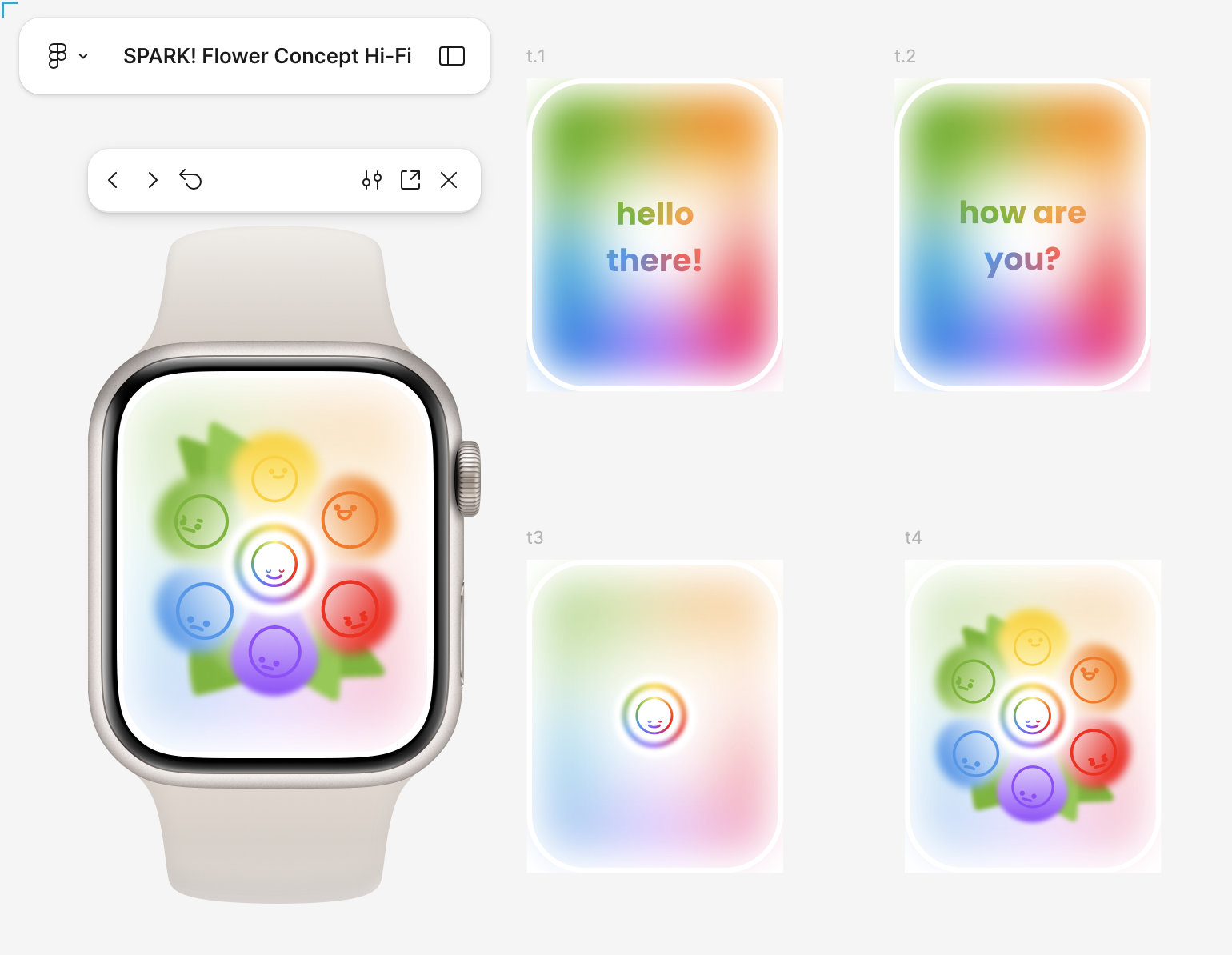Overview
The SPARK! Emotion Garden is a mobile and Apple Watch app designed to help children with hyperactivity and attention deficit disorders build independence and emotional regulation through a gamified learning environment.
The Problem
Children with ADHD often struggle to stay motivated and engaged with traditional tracking methods, making it difficult to consistently complete tasks and build habits.
Our Solution
We transformed these routines into a playful experience. Logging emotions and completing real-life tasks (like tying shoes) earns in-game rewards, providing tangible validation and encouraging consistency. Primary users: Children with hyperactivity and attention deficit disorders. Secondary audience: Parents and caregivers, who use the app to track progress.
The Design Process
My design process was heavily influenced by the research findings from the Cool Craig study (Cibrian, 2024), which highlighted the importance of supporting independence through self-sufficiency, autonomy, and fun. We focused on creating a design identity that felt both playful and empowering while mainting and adapting design guidelines for neurodivergent children to aligning cognitive load and sensory research with user engagement needs.
design thinking in action
Information Architecture and Interactions A key challenge was designing a seamless experience between the mobile app and the Apple Watch interface. Wearable technology, especially for a younger audience, requires a simplified and intuitive information architecture. My goal was to ensure the interactions were quick, clear, and low-friction, minimizing cognitive load for the user. For example, the smartwatch interface needed to be an immediate point of contact for emotion logging, using quick taps to select a mood. These selections then translated into a plant that the user could tend to in the mobile app's garden. This direct connection created a sense of cause and effect, reinforcing the user's agency.

My initial wireframes focused on the core flow of the app—from logging an emotion on the watch to seeing it appear as a new plant in the garden. I explored different layouts for the garden itself, considering how to make it feel dynamic and rewarding.
Prototypes: I developed interactive prototypes to test the user flow, particularly the animation of a new plant "growing" in the garden after an emotion was logged. I also prototyped the reward system, showing how a completed real-life task would grant the user a reward in the game. These prototypes helped us identify and refine key interaction points.
Of my design motifs , I highlighted sharing and communication - which I chose to represent through the use of overlapping forms , and layered color.
visuals and design systems
My main contribution was leading the design of the interaction between the smartwatch and the mobile app, as well as proposing the in-game mechanics that would drive engagement and reflection I collaborated with a fellow designer to develop a cohesive design system. We chose a bright, cheerful color palette and a friendly, rounded font to create a welcoming and non-intimidating user interface. The designs were intentionally simple and accessible to avoid overwhelming children with sensory sensitivities. Key design decisions were influenced by the following:
- Gamified UI: The central element of our design was the Emotion Garden. Every emotion a child logs becomes a plant they can tend to, such as watering it or simply observing its "tranquility." This transforms an abstract concept—tracking emotions—into a concrete, rewarding activity.
- In-Game Rewards: We designed a reward system where the completion of real-life tasks, like tying shoes or tidying a room, would be rewarded with in-game currency or items. This created a positive feedback loop, motivating children to work on their habits.
key fratures and mechanics
key features and mechanics
- Emotion Garden: The core of the app, where users can see a visual representation of their emotions as a vibrant, growing garden.
- Gamified Reflection: Users can "observe" their plants to see which emotion they felt and when, encouraging mindful reflection on their emotional state.
- Garden Maintenance Features: Users are prompted to engage with their garden by watering plants and caring for them, reinforcing a sense of responsibility and connection to their emotions.
design impications & next steps
-
To continue improving the SPARK! Emotion Garden, our next steps would be to:
- Conduct usability testing with our target user group to gather feedback on the in-game mechanics and overall user experience.
- Further iterate on the design based on user feedback, focusing on refining the reward system and enhancing the visual feedback loops.
- Explore additional gamified elements to support other habits, such as a "task-log" where children can track their progress on different goals.
